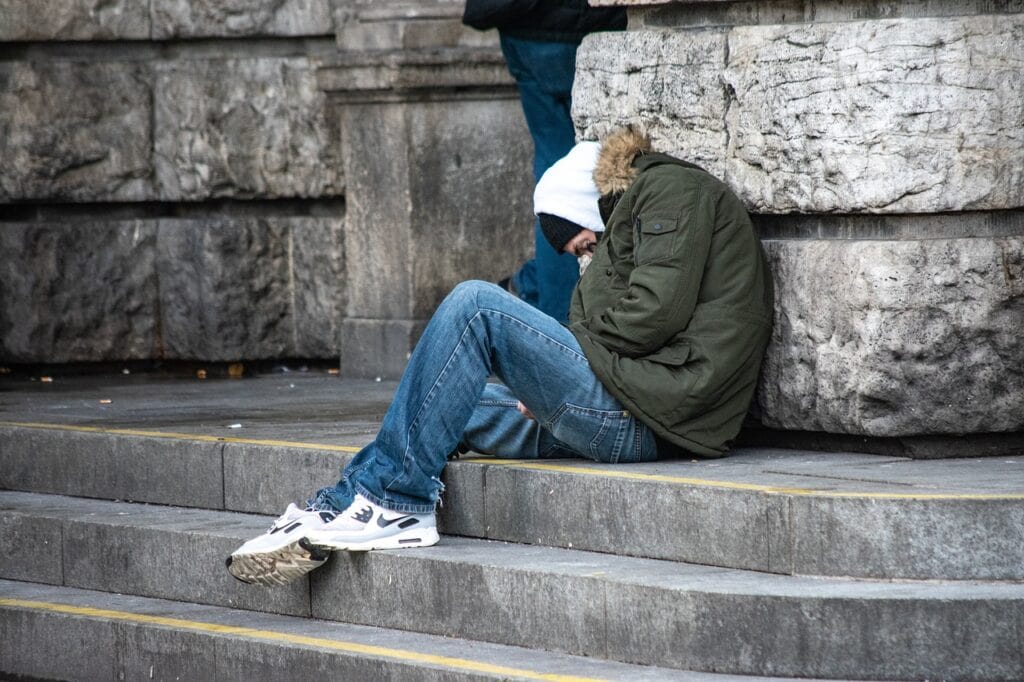The leaves are falling and temperatures are dropping. Now is the time, DC, Maryland, and other homeless populations begin a constant battle to escape exposure-related conditions like hypothermia, frostbite, and trench foot.
Unsheltered people are at special risk for hypothermia
Hypothermia—a condition in which the body loses heat faster than it can produce heat—is the biggest threat to our homeless neighbors.
Seven hundred people experiencing or at risk of homelessness are killed from hypothermia each year in the United States, according to the National Coalition for the Homeless.
Being homeless is difficult enough during the warm seasons. Winter makes it even harder to meet one’s basic needs. On the surface, it’s obvious that food and shelter become even more scarce. Yet, the changing of the seasons compounds even deeper issues.
Many aspects of life on the streets put homeless people at special risk for developing hypothermia. One major problem is malnutrition from living without a source of full, healthy meals. Another is pre-existing medical conditions—which often are the exact conditions that caused people to become homeless in the first place due to increasingly high medical costs.
Children and elderly people without homes are at an especially high risk for exposure-related injury or death.
Warm-weather clothing as a first defense
Below-freezing temperatures are just one aspect of the problem. The truth is, you can be affected by hypothermia even below temperatures dip below freezing. At temperatures as high as 50 degrees, wind and precipitation can cause hypothermia to set in even more quickly, especially for those without adequate winter clothing.
Imagine this: After living on the streets for several months, you’ve finally gathered a warm hat, scarf, mittens, and coat to wear for the upcoming winter months. You feel hopeful you can make it to spring. Unfortunately, the temperature is not the only factor at play. A late fall rainstorm has soaked your clothing and, because you only have one set of clothes, you must continue to wear wet clothing. Because it is not freezing outside yet, you assume you are safe. However, your wet clothing is actually causing you to lose body heat about 20 times faster than it normally would. Though it’s only 40 degrees out, your perceived body temperature is well below freezing. By the time you realize hypothermia is setting in, it may be too late to get help.
That’s why HYN Charity is organizing a winter clothing drive. Even the most basic clothing items make a huge difference. For example, your old winter hat can prevent an unsheltered person from losing 50 percent of their body heat through an uncovered head.
Consider donating your old winter clothing items such as:
- Coats
- Hats
- Mittens/gloves
- Scarves
- Boots
Help homeless individuals and families this winter
We can prevent exposure-related deaths by helping provide safe shelter for our homeless neighbors.
At HYN Charity, we provide emergency shelter, temporary housing, and long-term shelters depending on people’s unique circumstances. Every day, we are working to find and build more safe shelters and homes for people across Maryland. However, when shelter becomes scarce, warm clothing is a homeless person’s first defense.
With your help, we can prevent exposure-related death this winter. Please join in our mission to keep our neighbors out of the cold by donating your gently-used winter clothing.


Its the little things that will make the most significant changes. Thanks for sharing!
Thanks for your blog, nice to read. Do not stop.